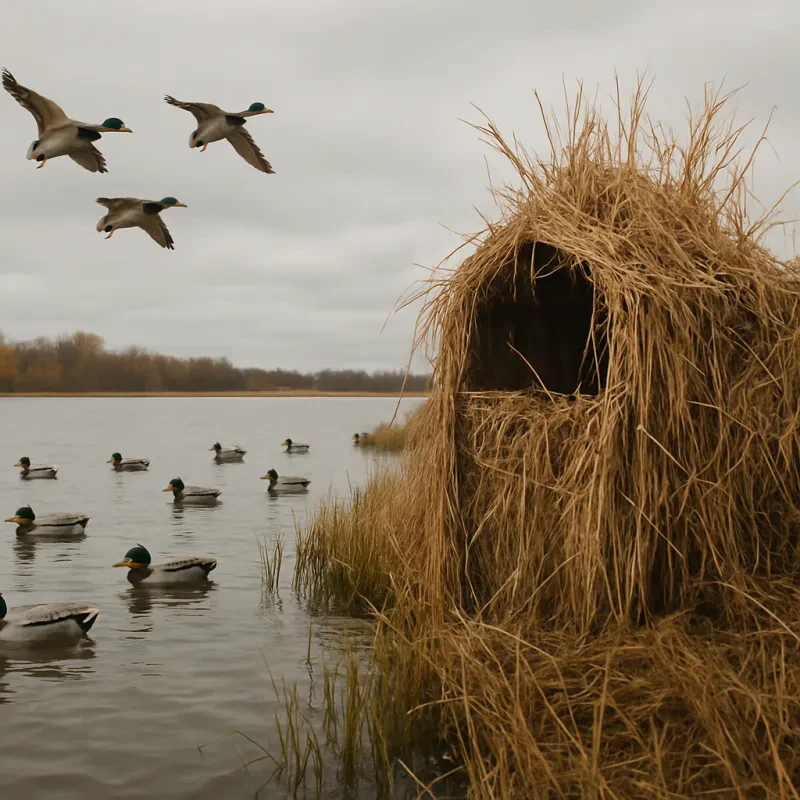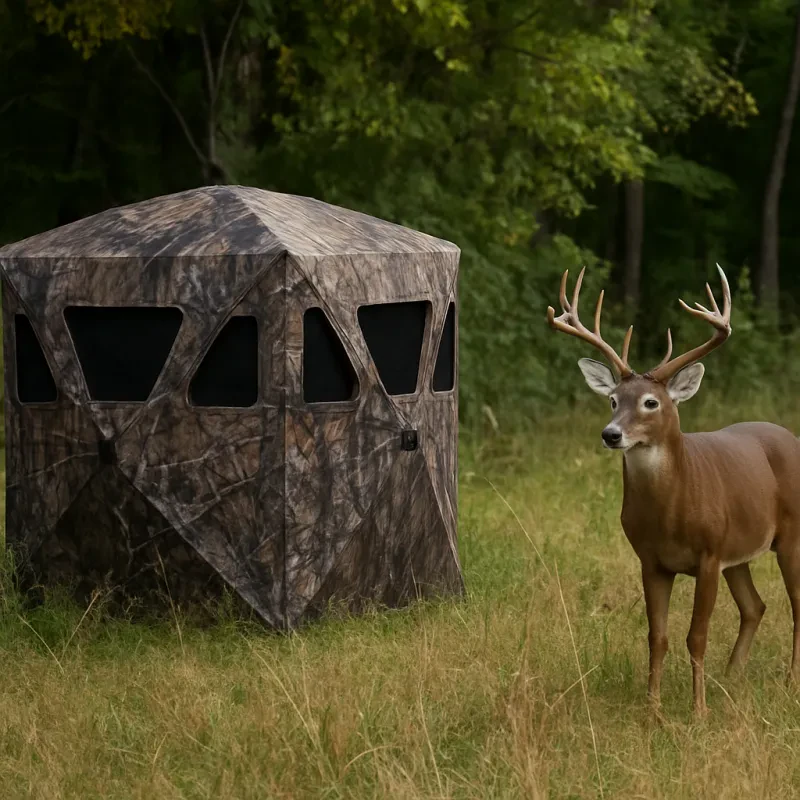When selecting your site, consider the wind direction. You want to position your blind so that the wind carries your scent away from the game. This will increase your chances of remaining undetected. It's also wise to avoid open areas that provide a clear line of sight for both animals and other hunters. Instead, opt for spots with natural cover, such as bushes or trees, to blend in seamlessly with the environment.
Finally, take into account the level of noise and disturbance in the area. Set up your pop-up hunting blind in a location that minimizes chances of being disturbed by other humans, traffic, or loud noises. The quieter and more isolated the environment, the better it is for hunting. Remember, finding the right location is one of the key steps in learning how to set up a pop-up hunting blind effectively, ensuring that you have the best chance of a successful hunt.
Preparing the Ground Area
Once you’ve picked an ideal spot, it’s time to clear the area. Remove any debris, sticks, or tall grass that could obstruct your view or provide an unwanted noise. Make sure the ground is level to ensure stability for your blind. If the area is too uneven, consider bringing in some soil or using wood planks to create a more stable foundation. A well-prepared ground area will help keep your pop-up blind sturdy, allowing you to focus on your hunt rather than worrying about your setup.
An important consideration when preparing the ground area is visibility and camouflage. Think about how you’ll blend into the environment. If possible, try to position your blind near natural cover like bushes or trees to help conceal it. You can also add some natural foliage around the edges of your blind before you set it up. This extra touch makes it less conspicuous and enhances your chances of staying hidden from curious wildlife while you wait to take your shot.
Lastly, consider the weather when preparing your ground area. If rain is in the forecast, choose a place that won't turn into a mud pit. Look for higher ground or areas with good drainage to keep your blind dry. Taking these weather-related factors into account while you learn how to set up a pop-up hunting blind will ensure a more comfortable and successful hunt.
Assembling Your Pop-Up Blind
To start, find a spacious area to unfold the blind. Lay the carry bag on the ground and unclip or unzip it. Gently pull out the blind and let it expand to its intended shape. Many pop-up blinds are designed to automatically spring into shape, so be prepared for it to pop open. Take care not to let it fly away as it expands, especially on windy days!
Once your blind is fully opened, it’s time to secure it in place. Use the included stakes to anchor the corners of the blind to the ground. Stability is crucial when learning how to set up a pop-up hunting blind, especially in windy conditions. Make sure the stakes are driven deep into the ground to prevent any movement. If your blind has additional tie-downs or straps, be sure to use those as well for extra security.
After securing your blind, take a moment to check for any additional accessories you might want to add, such as camouflage netting or internal shelves. This can enhance your comfort and concealment while hunting. Now that your pop-up blind is properly assembled and secured, you’re ready to settle in and enjoy your hunting expedition!
Camouflaging for Effective Concealment
When considering how to set up a pop-up hunting blind, one of the key factors for success is effective camouflaging. A well-camouflaged blind can help you blend into your surroundings, making it more difficult for animals to detect your presence. This can greatly increase your chances of a successful hunt, as wildlife is more likely to come closer if they don't feel threatened.
There are several techniques you can use to enhance the camouflage of your hunting blind. First, consider the natural environment where you will be setting up. Choose a location with plenty of vegetation or natural cover, such as bushes or trees. Position your blind in a way that maximizes this natural concealment. Using local branches, leaves, or grass to cover your blind can help it become part of the landscape.
Another effective method of camouflaging is to use camo netting or other materials that mimic the natural patterns of your hunting environment. Many pop-up blinds come with built-in camo designs, but you can add additional layers for more effectiveness. Additionally, avoid wearing bright or reflective clothing when inside the blind, as this can also give away your location. Opt for muted tones that match your surroundings to further increase your concealment.
Finally, remember to consider scent control while you focus on visual hiding. Animals rely heavily on their sense of smell, so try to minimize any odors coming from your blind. Use scent-free detergents for washing your gear and consider using natural scent neutralizers. This way, when you're learning how to set up a pop-up hunting blind, you're covering all bases for effective concealment.


